Atlantic Bluefin Tuna
Species Description
Bluefin tuna are a majority dark blue or black, particularly on their topside with flecks of silvery-green. On their underside they have a light silver colour, dotted with grey flecks, which provides camouflage in the ocean when hunting for prey. Prey looking up below the tuna will not be able to distinguish the fish from the glare of the surface water. Likewise, prey from above will not be able to see the tuna as the dark blue colour on the fish blends in with the darkness from the deep. This is also known as counter-shading, and is seen across many marine animals.
Bluefin tuna are highly migratory, travelling across the Atlantic, Indian, and Pacific Oceans. They have been recorded up to 4.5 m (14.76 ft) in length very rarely though most largest cases sit at 3 metres (9.8 feet). On average, bluefin tuna are more around 1.5-1.8 metres (5.8 feet) and have a mean weight of 250 kg (550 lbs).
Bluefin tunas can live to be more than 30 years old but do not reach sexual maturity till they are ten years of age. This is an issue for the longevity of populations of this species as this long a period leaves them open to being caught before they have had a chance to reproduce. This is an especially prevalent in fishing techniques such are purse seine given their lack of discrimination in capture. Spawning takes place at different times of the year for schools across the world, and the location of schools in either the Western or Eastern Atlantic influences the mean egg count per fish. In Eastern Atlantic schools, mean egg count per fish sits at 13-15 million while in Western Atlantic schools, it is as high as 30-60 million.
There are 3 species of bluefin tuna: Atlantic bluefin, Pacific bluefin and Southern bluefin tuna. They are among the larger bony fishes and eat squid and fish, including sardines, mackerel, and even other tunas. Despite having the smallest eyes across all tuna species, they have impeccable vision, hunting by sight.
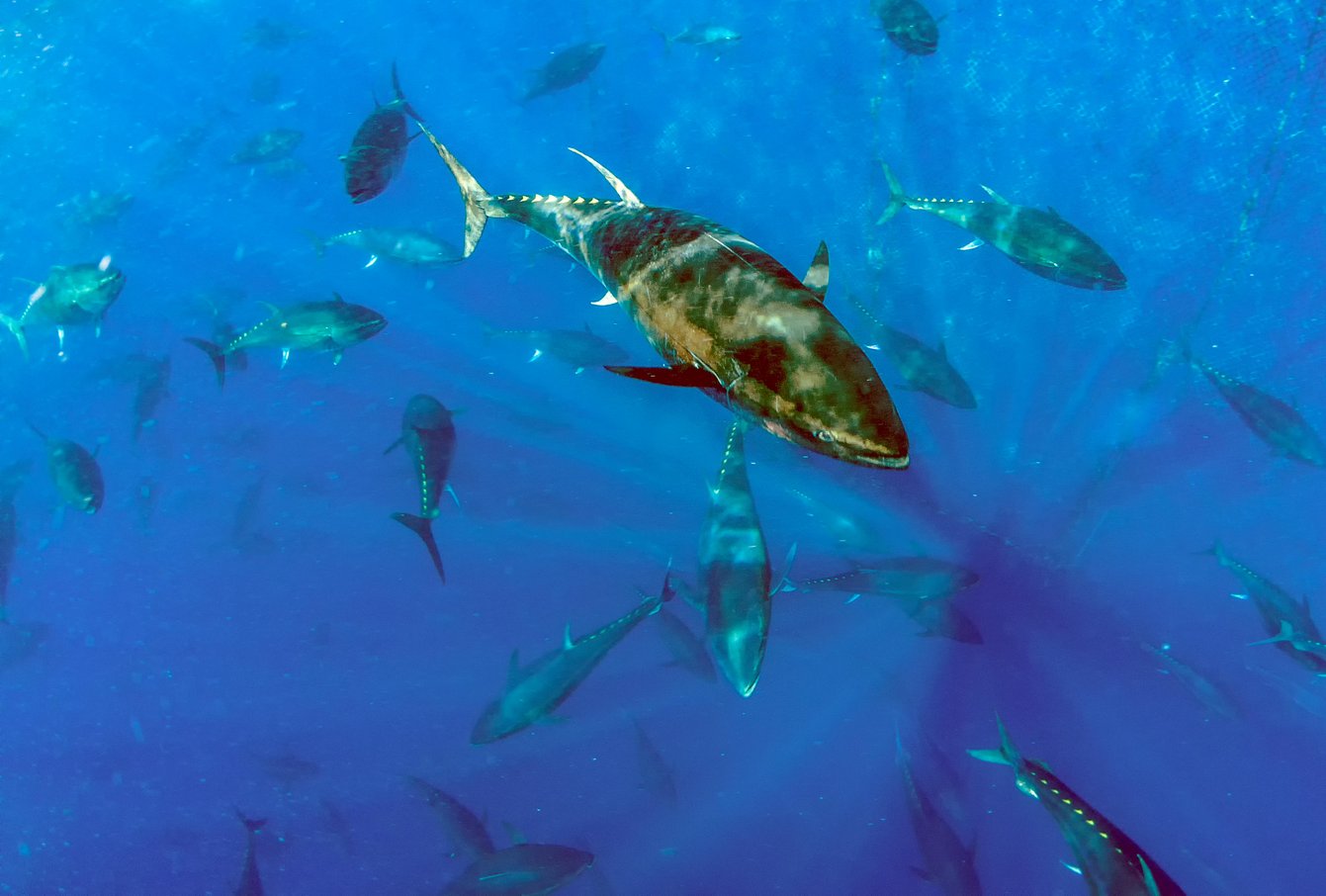
Gallery
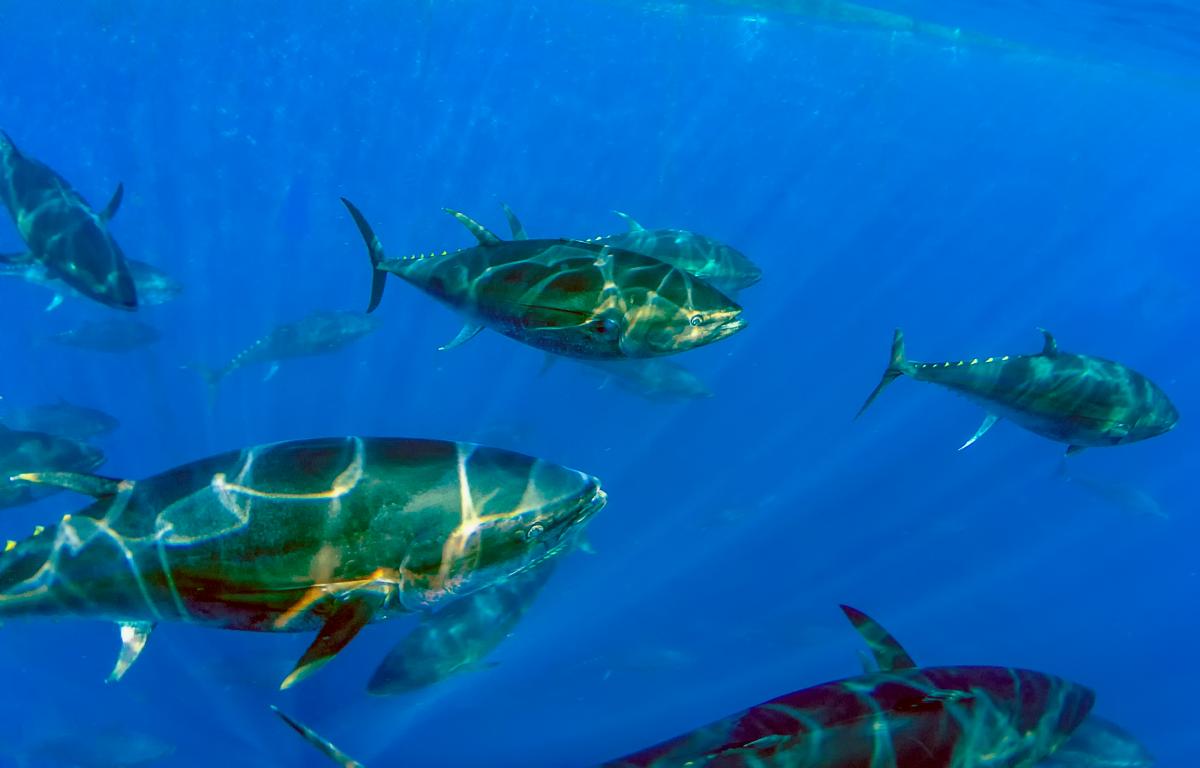
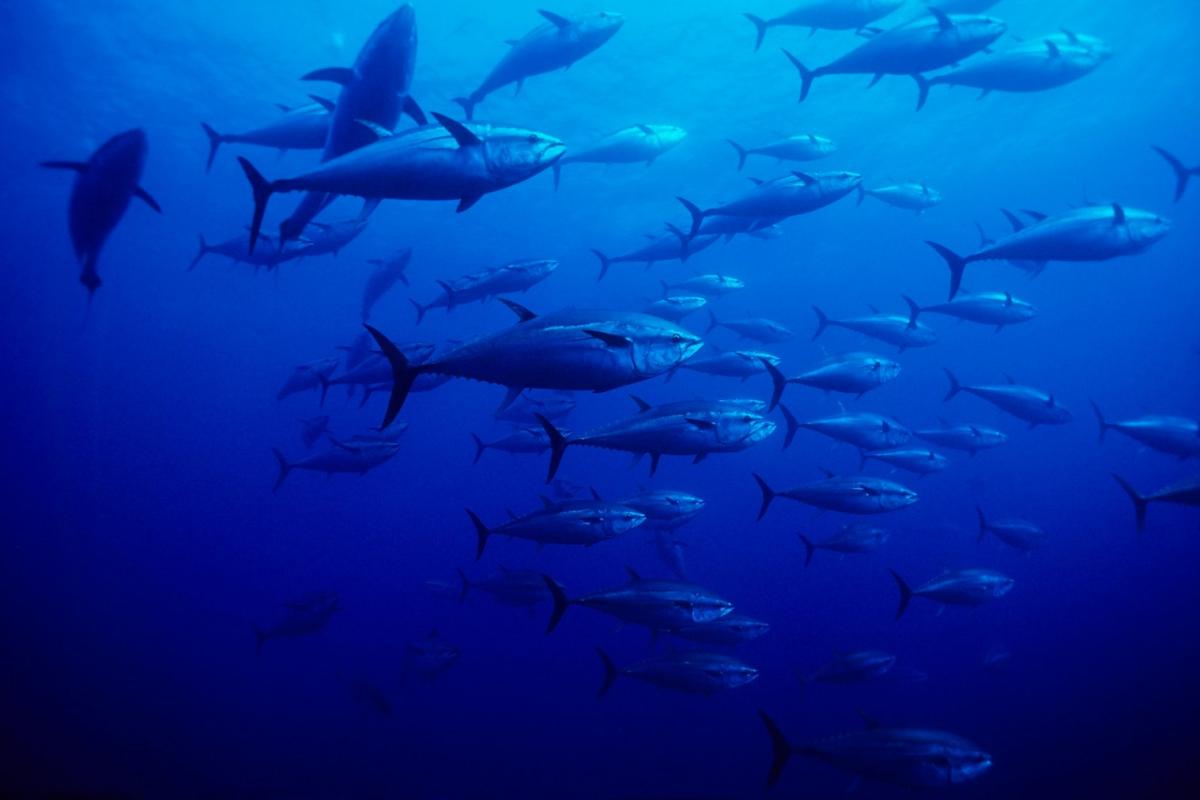
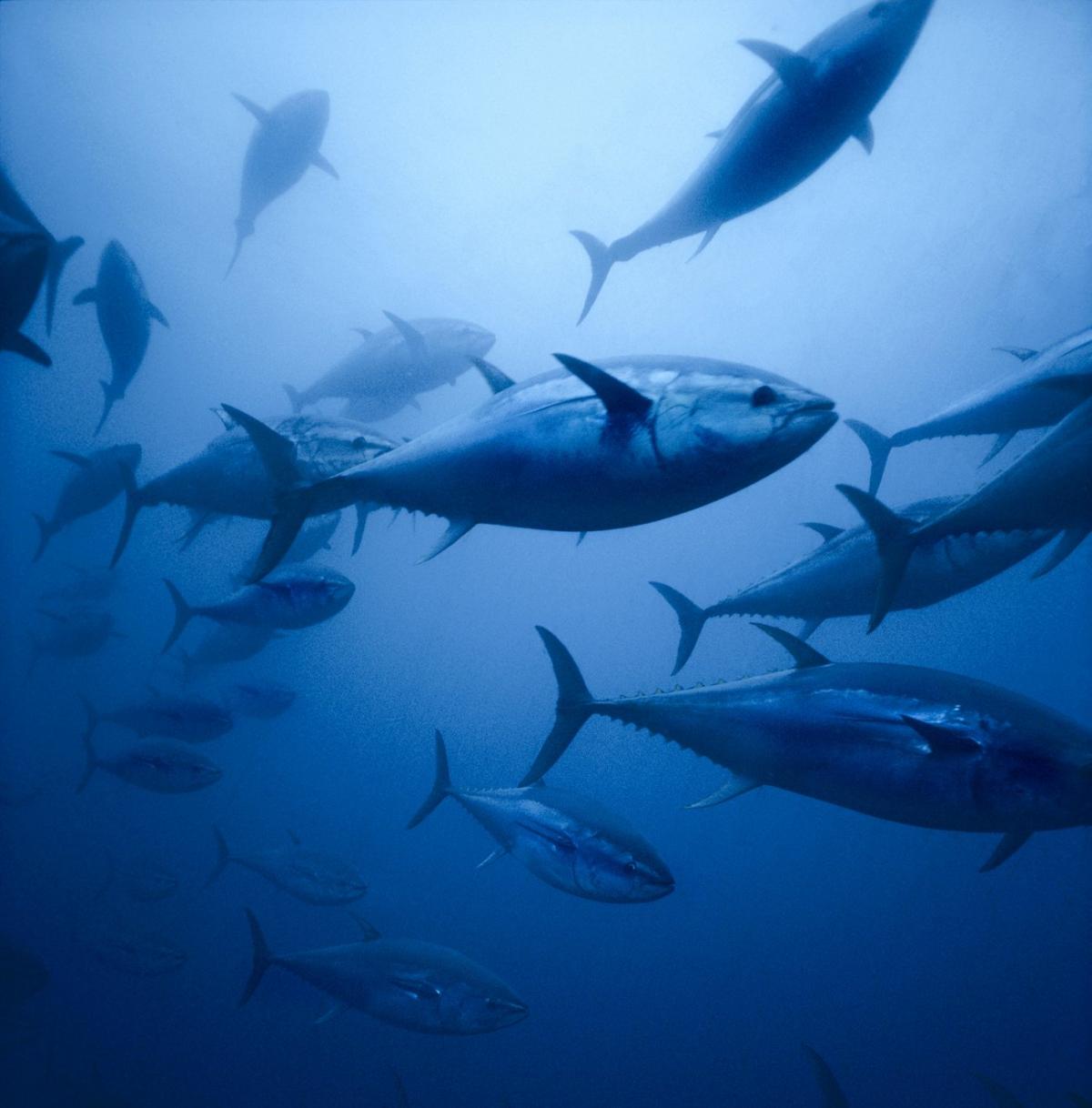
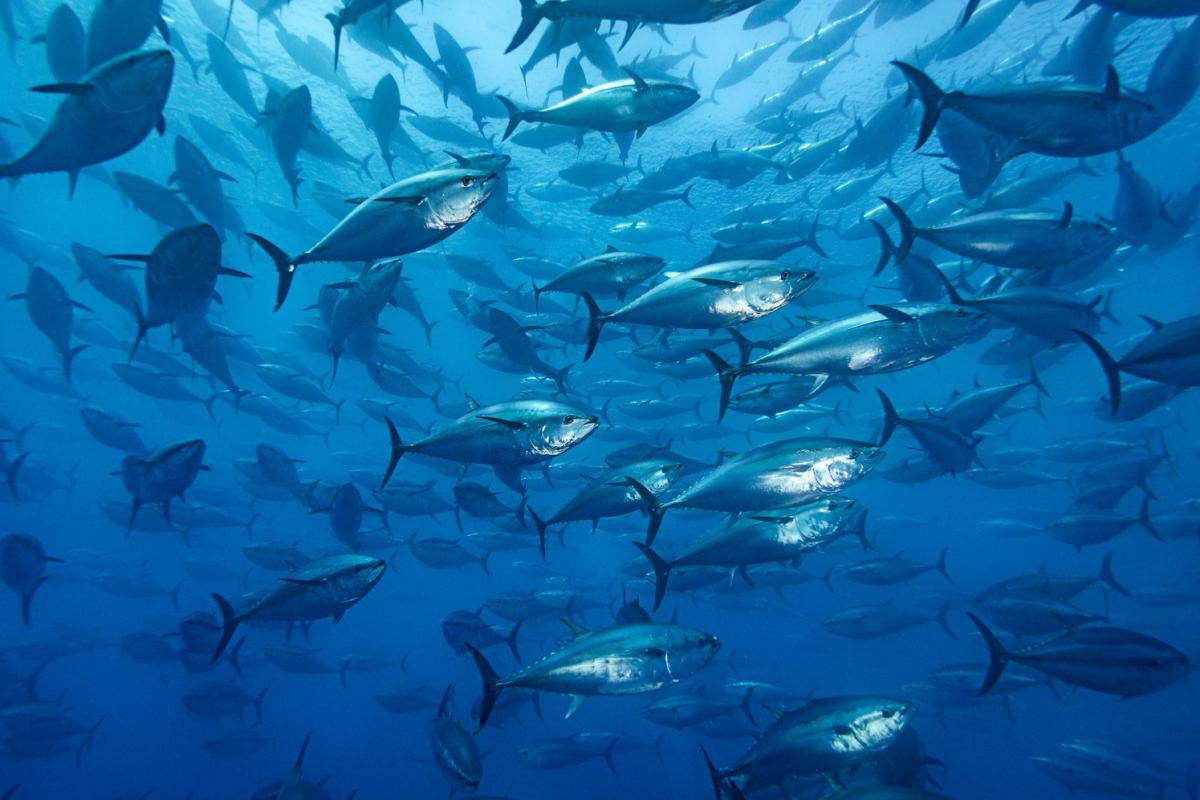
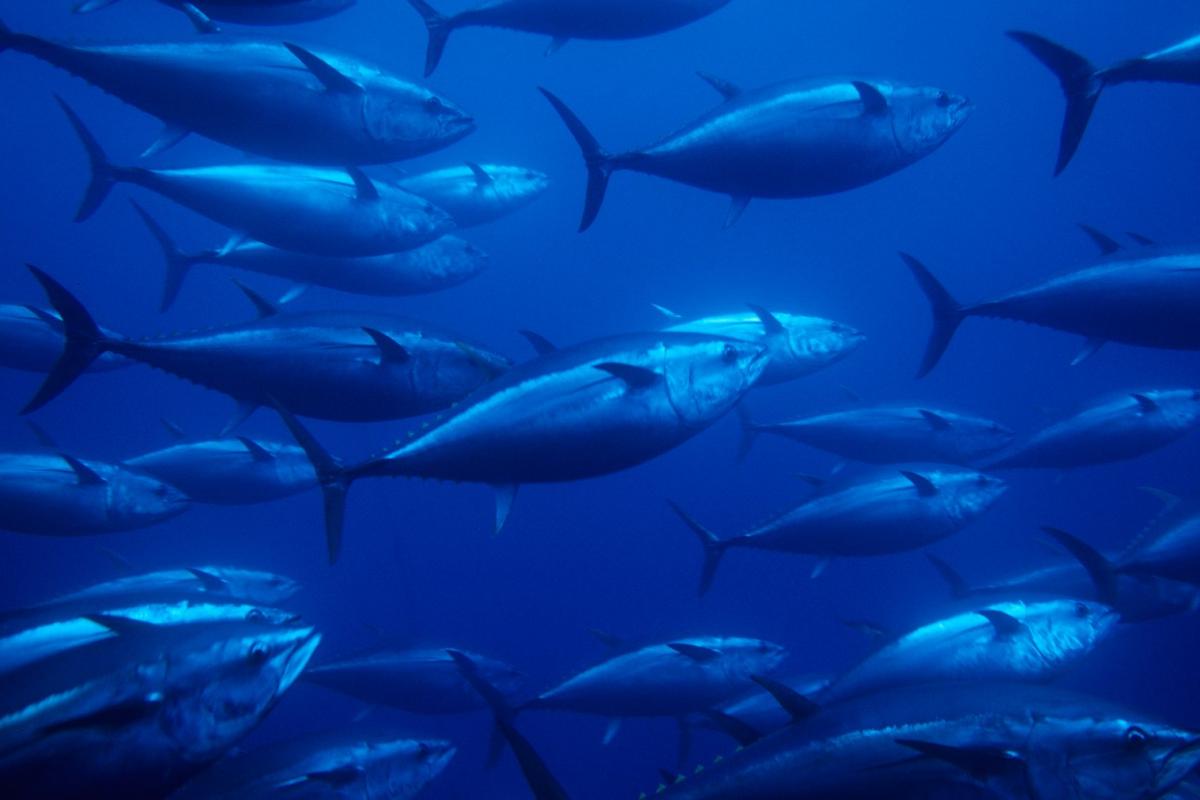
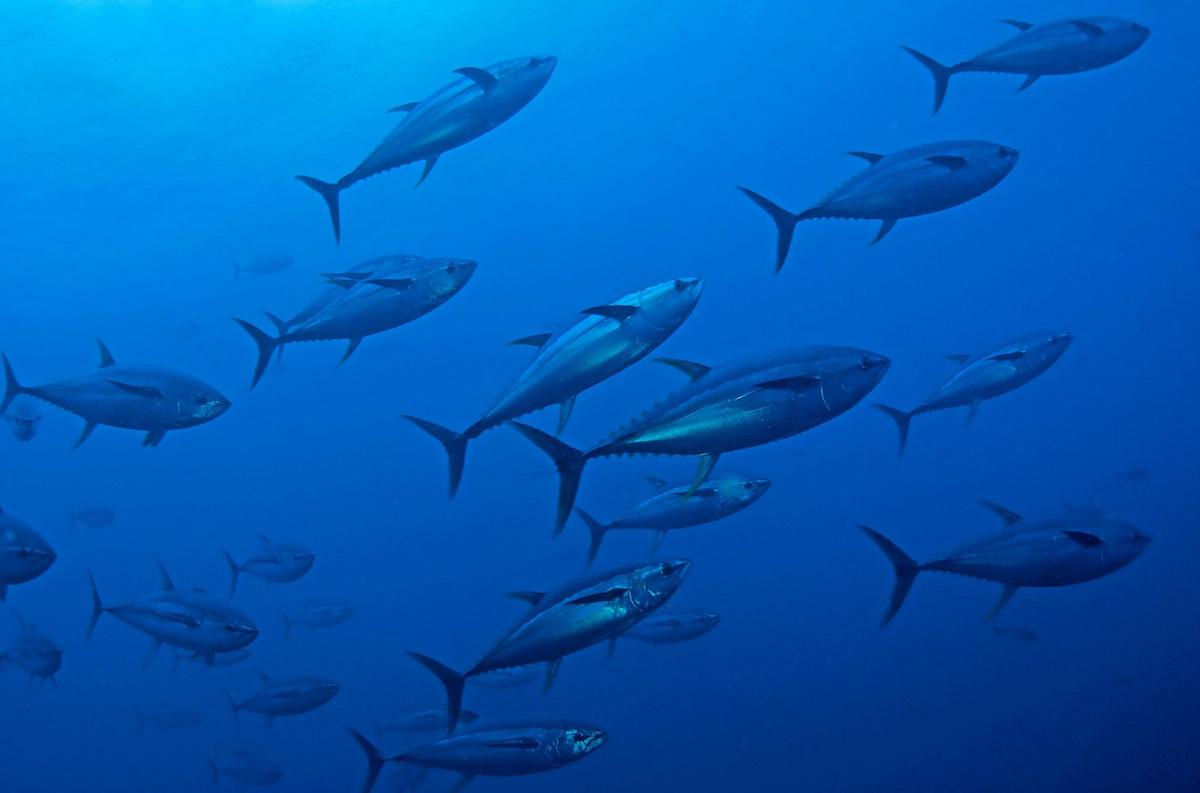
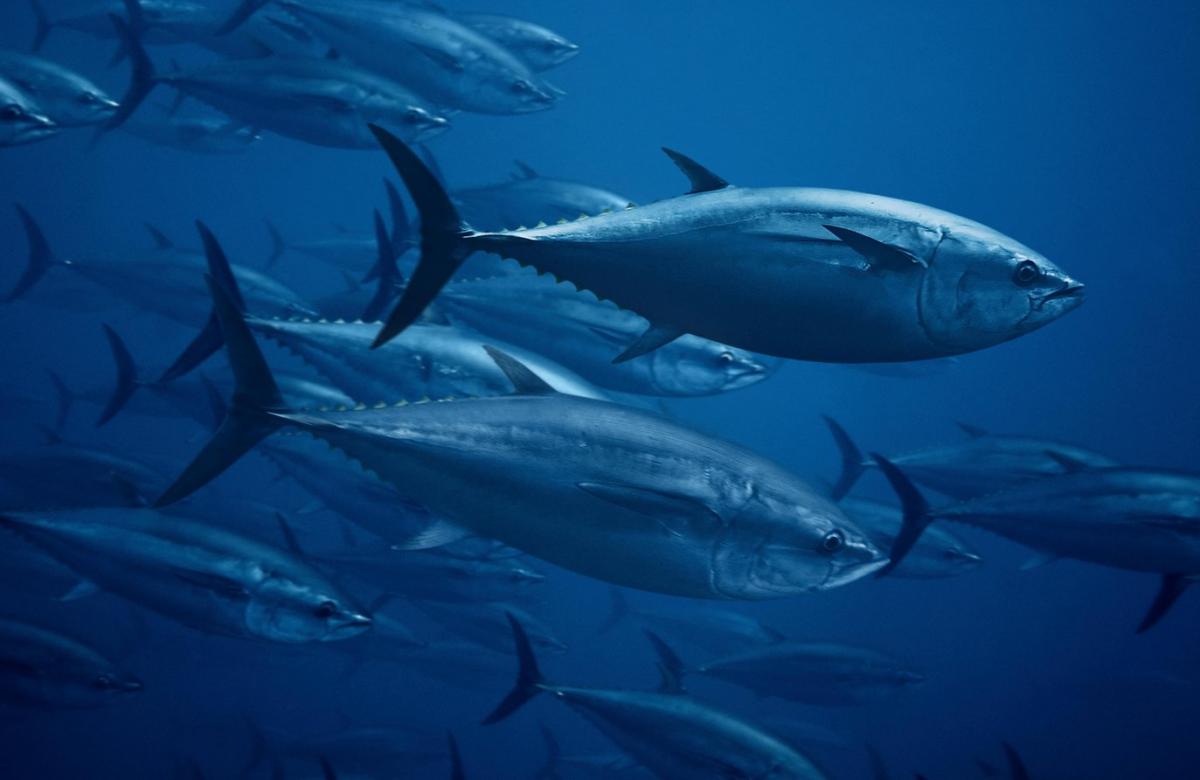
Sustainability
Atlantic bluefin tuna are labelled as endangered on the IUCN Red List. Global population declines and the high commercial value of these fish means that bluefin tuna stocks need to be very carefully and strictly managed to ensure future sustainability.
The large migratory potential for bluefin tuna makes conservation and sustainability management difficult across the oceans. Illegal, unregulated and unreported (IUU) fishing and overfishing is leading to significant decline in this species’ stock numbers across the world.
In the Mediterranean Sea, The International Commission for the Conservation of the Atlantic Tuna (ICCAT) facilitated research on bluefin tuna individuals, to understand more about their movements and migratory patterns, which helps to understand how to protect this population.
In the Western Atlantic, in the Gulf of Mexico, using longlines to fish for bluefin tuna is prohibited, however bluefin tuna can still be landed if they are caught from yellowfin tuna fisheries, therefore more management is required to ensure that stocks are protected.
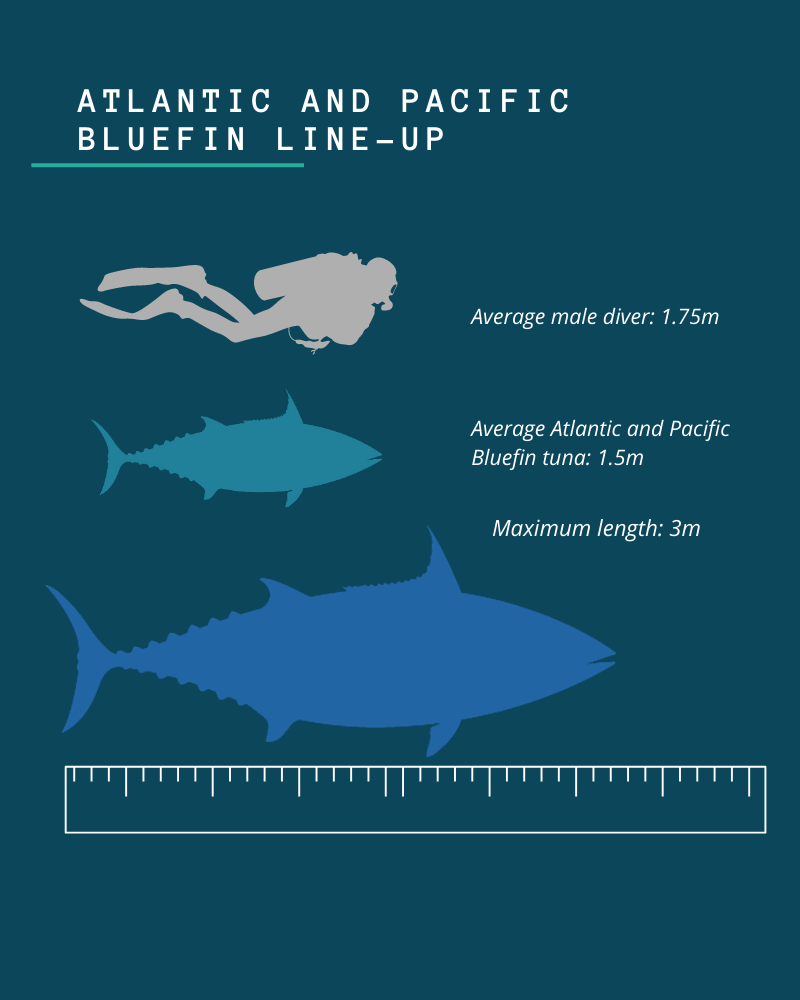
Dive Deeper...
Want to know more about bluefin tuna?
Download the reports to learn more about the environmental status of bluefin tuna.
Atlantic Bluefin Tuna Fisheries
Seafood
Bluefin tuna is one of the most renowned pieces of seafood globally. Its dark red meat is packed with flavour, with the high-fat content giving it one of the most intense flavours of all of the tuna. The beauty of this meat makes it perfect for high-end sashimi lovers. Japan is the biggest consumer of bluefin tuna, followed by the United States and China. The demand with high-end sushi chefs is at such a level that the famous 'Tuna King', Kiyoshi Kimura, purchased a 278kg bluefin tuna for an eye-watering 333,600,000 yen (£2.5m) in Japan's famous New Year’s auction of 2019.
Typically, the robust flavour of bluefin meat can have a price tag ranging anywhere from $20 USD to $200 USD, per portion. Bluefin tuna can also be marinated with seasonings that enhance the natural richness of the fish and seared to lock those flavours in, however, it is recommended to eat the fish as either rare or medium-rare.
The marbling near the skin and the rich high-fat flavour makes the juicy cut perfect for sushi dishes or cooked rare. It makes for a firm and meaty cut, and it isn't often processed in cans, unlike other tuna species like skipjack and albacore.
As with the other species, bluefin tuna is an excellent source of lean protein, with a plethora of nutrients including niacin, vitamin B6 and B12, and phosphorus, whilst remaining low in fat and sodium.



